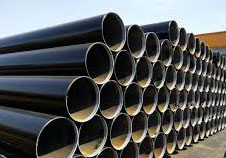Description
Tensile Strength of API 5L X60 Pipe
Before selecting pipes for your specific needs, it is crucial to understand the tensile strength of the pipe, as it determines its ability to resist tension and maintain mechanical integrity. With my extensive experience in dealing with various API-specified pipes, I can accurately describe the tensile strength of the API 5L X60 pipe.
The API 5L X60 pipe, also known as L415 pipe, is a high-grade steel pipe commonly used in oil & gas pipelines and other demanding environments. It is available in PSL1 and PSL2 categories and manufactured through various processes such as seamless, ERW (Electric Resistance Welding), LSAW (Longitudinal Submerged Arc Welding), and HSAW (Helix Submerged Arc Welding).
- Ultimate Tensile Strength (UTS): The minimum tensile strength of the API 5L X60 pipe is 520 MPa or 75,400 PSI.
- Yield Strength: The minimum yield strength is 415 MPa or 60,200 PSI.
This high tensile strength makes the API 5L X60 pipe ideal for withstanding the extreme pressures and forces typically encountered in oil & gas transmission systems.
Difference Between API 5L Gr.B and X60 Pipe
While both API 5L Gr.B and X60 are commonly used pipes under the API 5L standard, there are notable differences between the two in terms of their mechanical properties and chemical composition:
- Yield Strength:
- X60 has a higher yield strength of 415 MPa, compared to 245 MPa for Gr.B pipes.
- Manganese Content:
- X60 pipes contain 1.6% manganese, which is higher than the 1.2% found in Gr.B pipes. This increased manganese content contributes to the enhanced strength and durability of X60 pipes.
These differences make X60 a better choice for applications requiring higher strength and resistance to stress, while Gr.B pipes are suitable for less demanding environments.






